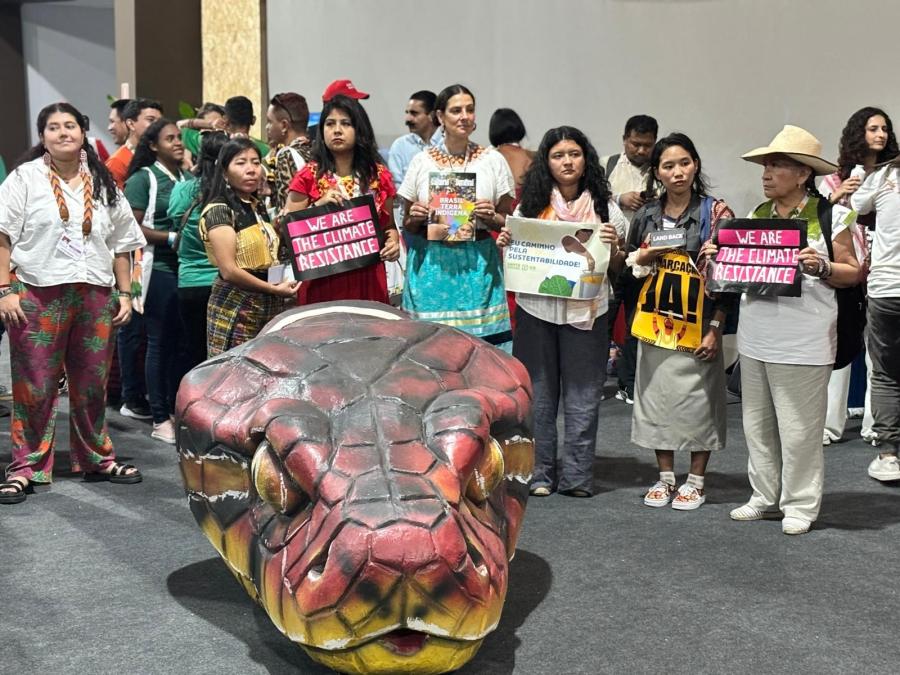The most frequently used remedies for health problems in the Third World are drugs and vaccines. Evans, Hall, and Warford, in the New England Journal of Medicine (NEJM), write, "In looking to the future...[health] problems may [result from the] excessive and irrational use of drugs..." The pharmaceuticals industry is a big foreign exchange earner for developed countries. Developing countries, where 70 percent of the world's population live, produce only 7 percent of the drugs they consume.
The average expenditures on drugs is from 40 to 60 percent of total health care expenditures. From 1965 to 1976, international commerce in pharmaceuticals increased from $1.2 billion to $4.5 billion. Today it is in the tens of billions. In Latin America, drug sales amount to more than $1.5 billion annually, and are doubling every five years. Twenty multinational firms dominate the entire Latin American market, and in Brazil and Colombia control 88 percent of it.
About half of all deaths in Third World countries are of children less than five years of age. Diarrhea, respiratory infections, and infectious diseases (e.g., diptheria, measles, and whooping cough) are the major causes of death. These ailments can be effectively controlled by inexpensive measures used in developed countries. Instead, the budgets of many Third World countries go to the purchase of expensive drugs often of dubious utility for the majority of the people.
Dr. Milton Silerman, pharmacologist (U-Cal) and author of Prescription for Death, says
The pharmaceutical industry has done far more good than harm...But it is not perfect; and the practices that I have been worrying about...are no trifling problem. It concerns hundreds of thousands of people a year in the Third World, and it is a blemish on an industry which is grossing sales in the tens of billions of dollars a year.
Multinational firms have taken advantage of the increasing concern for health care in developing countries. Firms have admitted to spending millions of dollars in promotion and "gifts" to secure contracts with government health services. Once companies have secured contracts they sell drugs that are banned or restricted in other countries, and dump drugs on Third World markets whose expiration dates are near. In Tanzania, for example, a British doctor found a 45-year supply of a Hoechst antibiotic that has a shelf life of 2 years under ideal conditions and probably only 6 months in the tropics. In addition, companies mark up the price of their product many times its cost; mark-ups in Colombia have been reported as high as 6000 percent.
Multinationals promote their products not only to governments but also to individual purchasers. In Colombia there is a drug promoter for each doctor; in Brazil there is one for every three doctors.
In an attempt to increase sales, pharmaceutical companies change the maximum recommended dosage of drugs whenever possible. Welcome, for example, sells its migraine drug Migril with a maximum of 10 mg/wk in the US, 12 mg/wk in the UK, and 24 mg/wk in Africa and Asia. Glaxo's combination antibiotic, Gueanimycin Suspension Forte, has a maximum dosage twice as high in LDC's as it has in the UK. Moreover, drug companies frequently understate a drug's side effects and in many instances misrepresent a drug's efficacy. For example, Glaxo's version of Meclizine (Bonine), Ancoloxin, was sold in Malaysia in 1979 for control of morning sickness although research has caused the US FDA to recommend it not be used for pregnant women. In the US, Bonine is recommended for motion sickness; perhaps Malaysian authorities simply misread the indications.
In addition to restricted drugs, birth control devices and medical equipment (such as X-ray machines) banned or severely restricted in the US are often shipped abroad. The US Food, Drug, and Cosmetic Act of 1938, which does not allow the exportation of drugs that are banned in the US, is easily circumvented. Because these regulations do not apply to drugs produced by foreign subsidiaries, developing countries can still provide convenient markets for products that could not be exported directly from the US. Investments by US pharmaceutical firms in other countries increased in the 1970s - precisely when more drugs were banned in the US. It was at this time that the international trafficking in drugs began to expand dramatically.
Tracking foreign investments by US drug firms is rather like a shell game: now you see it, now you don't - but mainly you don't. European firms, unencumbered by legislation, are, by and large, free to export unapproved drugs manufactured domestically, and in effect can ship abroad any substances, such as antibiotics, which are not officially classified as drugs, can be banned in the US and still sold abroad. (In Mexico, for example, 2178 brands of antibiotics are sold, including 144 brands of ampicillin and 196 of tetracycline, both of which are available only by prescription in the US.)
Evans, Hall, and Warford write, 'The importance of drugs to the quality of health care, to the credibility of community health workers, to the development of iatrogenic disease (for example from toxicity or antibiotic-resistant microorganisms) and to the cost of health services makes it imperative that developing countries establish better mechanisms for assessing drug requirements and for purchasing, quality control, storage, and distribution of drugs. Experience in Tanzania and Ghana indicates that savings up to 70 percent of the budget for pharmaceuticals could be achieved by promoting generic alternatives and introduction of controls against overproduction.'
Yet, Third World countries will not or cannot police all the imports. A 1976 Ford Foundation study found that 36 countries did not require drug registration before marketing began; 64 others (including Brazil) insisted only that the drug be licensed and sold in the exporting country. Even tightly restricted drugs are licensed and sold. Pharmaceutical companies can import drugs banned in the US into these 64 countries simply by routing them through countries which require no registration. For example, Guatemala, which has few restrictions, "exports" drugs to Brazil that are banned for use in countries where they were manufactured.
Officials in some countries are willing to accept the health risks that certain drugs represent. Ghanan officials, for example, see the country's population explosion as potentially more dangerous than the risks of birth control pills with high estrogen levels. Given that population control is necessary, what needs to be measured is the relative health costs of each available form of birth control.
Yet, politicians and planners decide on the national choice of contraceptive methods, whose short-term effects may be dangerous and whose long-term effects remain unknown. Such decisions have their greatest impact on the poor who, in much of the Third World, are ethnically distinct from the ruling elite. Thus this type of population control can be seen as another example of a dominant ethnic group strengthening its control over other groups.
The research efforts of the pharmaceutical companies are geared to the needs of the industrialized countries. In some of the more advanced Third World countries, such as Mexico and Argentina, less than one percent of drug companies' sales are spent on research. Under these circumstances, the Third World receives technology that, even when useful, does not fully meet its needs. For example, although millions suffer from Chagas disease, schistosomiasis, trypanosomiasis, and onchocerciasis, little money or effort is spent to find cures. There is little incentive on the part of drug companies to develop new therapies when people are willing to pay, often the equivalent of a family's weekly food bill, for useless or multiple courses of inappropriate medicines.
To date, attempts to confront and change the international drug trade system have been ineffective. Some countries have attempted to counter the high cost of imported medicines, the dumping of thousands of brands, and the inappropriateness of imported medicines for local ailments by nationalizing the pharmaceuticals industry. India is a case in point. There, however, serious problems have arisen. There is little quality control - some formulations containing only one percent of the ingredient they are supposed to contain, others have none. Some contain higher proportions than the formulation is to have. Many times no expiration date is fixed on the product. Finally, Third World pharmaceutical companies do not have the resources and rarely the personnel and facilities to develop medicines appropriate to local ailments.
Many people in the Third World still die for lack of medicines, though drugs for illnesses of the wealthy are readily available. In August 1979, 93 babies in a single maternity clinic in Bogota died for lack of medicine. One physician in Tanzania has complained about the promotion of luxury drugs when malnutrition is so much more critical. "Our people do not need vitamins. They need calories, they need protein, they need food. They are starving to death. Inducing them to spend their little money on vitamins is indecent."
Article copyright Cultural Survival, Inc.



